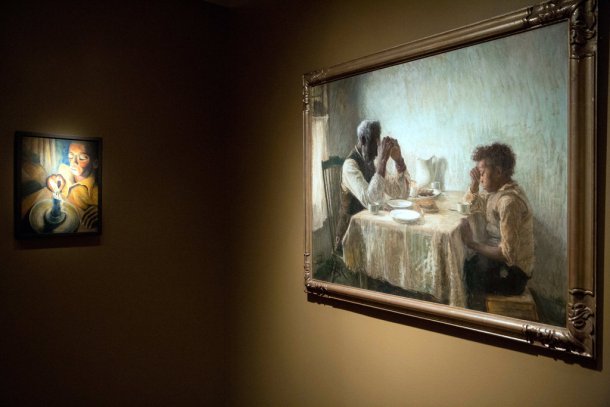Uma conversa entre dois continentes
Published11 Nov 2014

"Conversations: African and African American Artworks in Dialogue" junta duas grandes colecções: a do National Museum of African Art - que viria a tornar-se o Smithsonian- e a colecção Camille O. and William H. Cosby Jr. - da estrela televisiva Bill Crosby, começada nos anos 60 e raramente vista em público. Na comemoração do 50º aniversário do Smithsonion National Museum of African Art, em Washington, mostram-se obras de artistas americanos e africanos, desde o século XVII até à contemporaneidade, em diálogos articulados em torno de temas como espiritualidade, poder e política, memória, família e esfera pública. O New York Times chamou-lhe "Continents in Conversation":
And everything gets a zap of vitality from being seen in the context of African objects from the museum’s holdings. The addition of Africa to African-America naturally implies complicating of the history told by the Cosby collection. But the show’s organizers — Mr. Driskell, working with Adrienne L. Childs, an independent scholar, along with Christine Mullen Kreamer and Bryna Freyer, curators at the museum — don’t explicitly pursue that route. They keep the cross-cultural conversation unpressured and loosely thematic. Some inspired exchanges result.
A few are obvious: a 1970s tempera painting by Mr. Driskell of a cast bronze head from Benin, in West Africa, shares a display case with a splendid example of the real thing. Elsewhere, atmosphere is, at first glance, a binder. Tanner’s “The Thankful Poor,” an image of an older man and boy saying grace at a table, is paired with a smaller painting by the South African painter Gerard Sekoto of a young man sitting alone near a lighted candle. Both pictures are about luminosity, but their moods are different. Tanner’s tableau is serene; the face of Sekoto’s candle watcher is tensed and tight.
Ideals of fashion bounce around between eras and continents. Archibald J. Motley Jr.’s “Senegalese Boy,” painted in Paris in 1929, is of an African subject who, in his white shirt and tie, might easily be in New York or in Chicago, Motley’s hometown. With her lace collar, delicate necklace and elegant empire gown, the sitter in Johnston’s “Lady on a Red Sofa” is clearly dressed to the nines. But so is the woman in a Baule carving from Ivory Coast, who also wears a necklace but whose only other attire is a few strands of beads around her waist.
